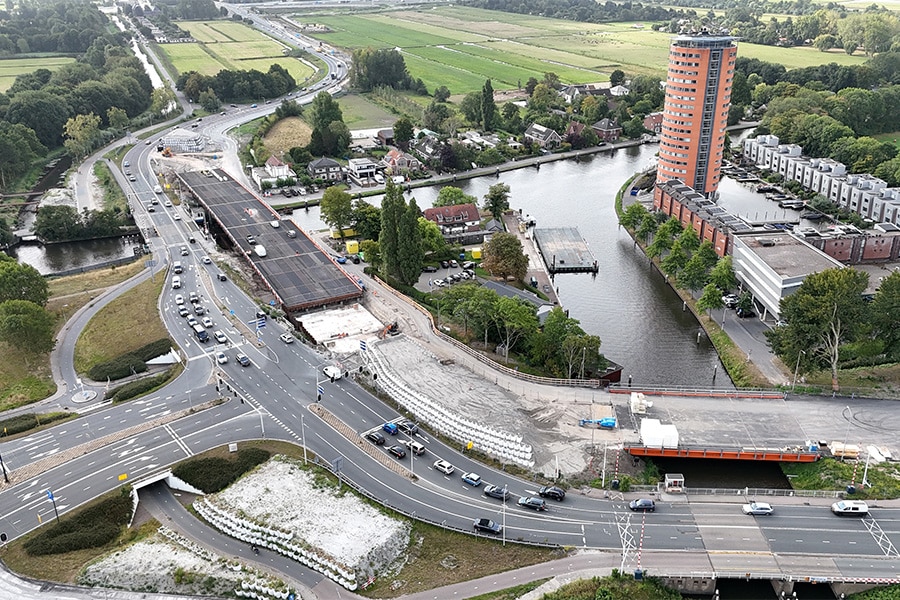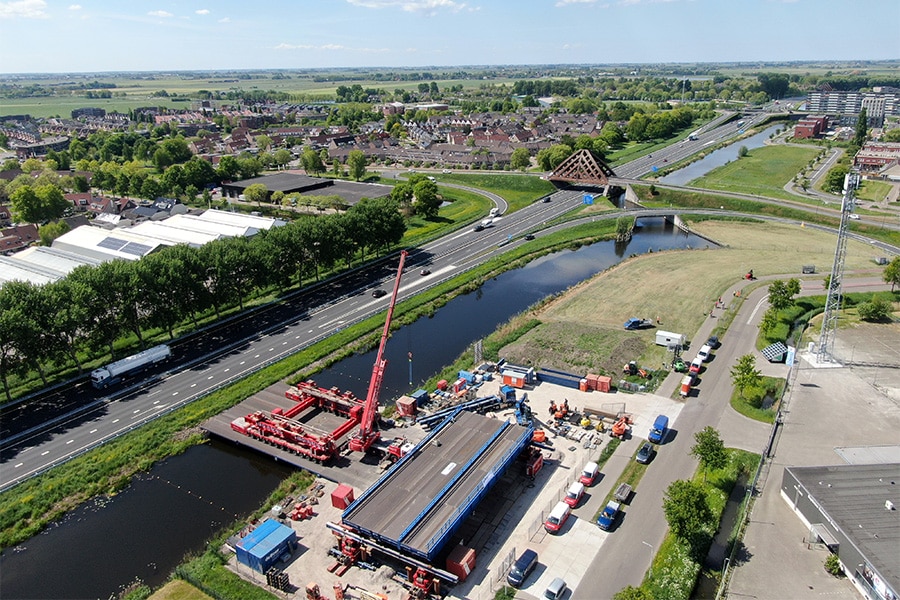
Bicycle bridge made of geopolymer concrete is promising pilot
One such solution is geopolymer concrete, a very environmentally friendly concrete variant that is being used around the construction of the new N69 to build a 16-meter long post-tensioned bicycle and pedestrian bridge. Boskalis initiated a promising pilot project together with partners Sqape (developer) and Jansen Beton (producer). It enables the market to literally break new ground towards the future.
The development and application of the geopolymer concrete fits perfectly with the Province of North Brabant's desire to provide projects with the most sustainable character possible. "With this product, together with our partners, we not only provide an appropriate and well-considered answer to the customer's demand," believes Han Heijsters, co-responsible within Jansen Beton for the sustainability policy in a broad sense. "At the same time, we learn so much from this that it becomes easier to take steps together towards new applications in the future. With a trial pour in January and the final pour in June 2021, the start has at least been made. And that is very promising..."

Environmental impact 60% lower
The geopolymer concrete type used for the bridge located near Dommelen to create the bridge deck, riser plates and abutments is optimally matched to the performance required by the contractor. "In the concrete mix made specifically for this purpose, the cement as a binder has been completely replaced by geopolymers," explained Heijsters. "The aggregates used consist entirely of thermally cleaned sand and aggregates. This results in an environmental impact ín comparison with traditional Portland cement concrete that is as much as 60 percent lower."
Extensively tested
While geopolymer concrete has already been cautiously used for sand-based safe applications such as bicycle paths and traffic circles, Jansen Beton cum suis is stepping up a notch with this project. "You're talking about a generously sized free-hanging post-tensioned bridge deck here," says Heijsters. "And that has consequences. For, among other things, the composition of the concrete mix, the method of application and, of course, the safety requirements. Those are totally different here and especially stricter. All this makes this application considerably more complex and comprehensive. That is why various tests have been carried out at TU Delft, Sqape and with us on compressive strength, tensile strength and shrinkage, among other things. We play it safe and leave nothing to chance."




